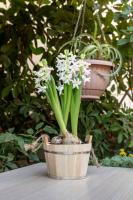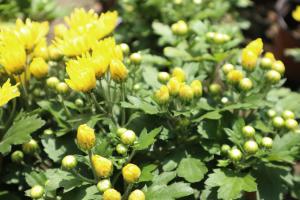Introduction
If you are planning to grow bell peppers, one of the most important things to consider is the spacing between the plants. A common mistake that many gardeners make is planting their bell peppers too close together, which can lead to a number of problems including poor growth and reduced yields. In this article, we will discuss how far apart you should plant bell peppers to ensure healthy growth and a bountiful harvest.
Factors to Consider
Before we dive into the ideal spacing for bell peppers, it is important to consider a number of factors that can influence the amount of space you should leave between your plants. Some of these factors include the variety of bell pepper you are growing, the soil quality, the climate, and the amount of sunlight and water your plants will receive. In general, it is best to err on the side of caution and provide more space than you think your plants will need.
Ideal Spacing for Bell Peppers
So, how far apart should you plant bell peppers? As a general rule, it is recommended to leave at least 18 to 24 inches of space between each plant. This spacing will ensure that each plant has enough room to grow and develop a healthy root system, which will in turn support strong and productive growth. However, if you are growing larger or bushier varieties of bell peppers, you may need to provide even more space to ensure optimal growth and yield.
Planting Tips
When planting bell peppers, it is important to ensure that the soil is well-draining, nutrient-rich, and has a pH level between 6.0 and 6.8. Bell peppers also require full sun, so choose a location that receives at least 6 hours of direct sunlight per day. Additionally, make sure to water your plants regularly to keep the soil moist but not waterlogged. Finally, consider using a high-quality fertilizer specifically formulated for bell peppers to provide your plants with the nutrients they need to thrive.
Conclusion
In conclusion, planting bell peppers at the right spacing is crucial for ensuring healthy growth and a bountiful harvest. By providing your plants with adequate room to grow and develop, as well as the right soil, sunlight, and nutrients, you can help ensure a successful crop. Remember, when in doubt, it is always better to provide more space than you think your plants will need.

 how many times do yo...
how many times do yo... how many planted tre...
how many planted tre... how many pine trees ...
how many pine trees ... how many pecan trees...
how many pecan trees... how many plants comp...
how many plants comp... how many plants can ...
how many plants can ... how many plants and ...
how many plants and ... how many pepper plan...
how many pepper plan...






























